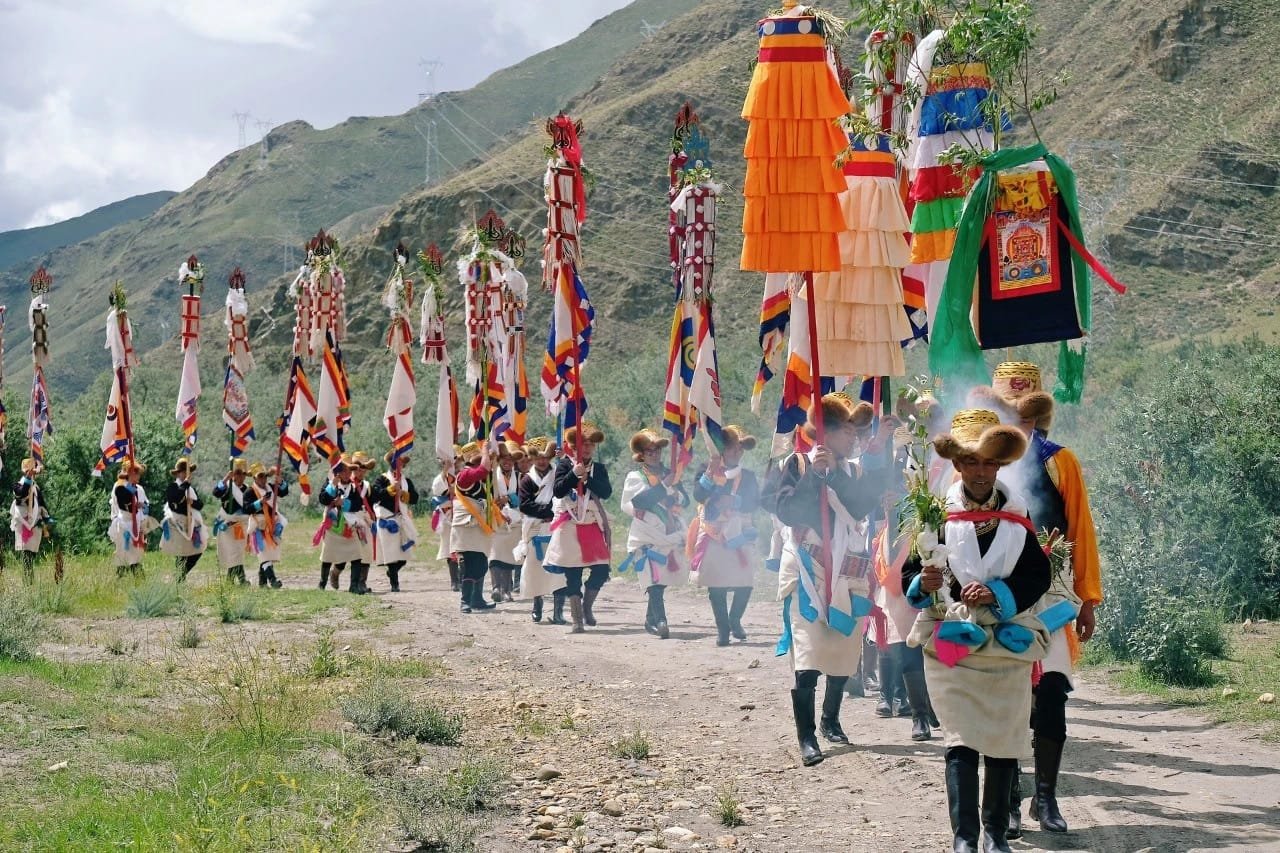Historical Context of Dingtri Tsenpo
The historical backdrop of Dingtri Tsenpo is pivotal in understanding the early Tibetan dynasties. The Yarlung dynasty, which emerged around the 7th century, is often regarded as the foundation of a centralized Tibetan state. This dynasty marked significant political and cultural advancements in the region. It established the early roots of what would later become a robust Tibetan identity, intertwining religion with governance, particularly through the promotion of Buddhism.
The lineage of Dingtri Tsenpo, often debated among historians, is particularly significant. He is frequently identified as the son of Mutri Tsenpo, a prominent figure in early Tibetan history. Historical accounts suggest that these early kings were not merely rulers but were also regarded as semi-divine, reflecting a intertwined cultural belief system where lineage and divinity were deeply connected. This mythological narrative complicates the historical understanding of Dingtri Tsenpo, as it raises questions about the authenticity of the sources available, many of which are shrouded in oral tradition and myth.
Interpreting the early Tibetan civilization presents challenges for historians due to the scarcity of concrete records. The reliance on later chronicles and local lore often leads to discrepancies and gaps in understanding the socio-political dynamics of Dingtri Tsenpo’s era. Various accounts come from religious texts and the histories that followed centuries later, thus requiring careful analysis to distinguish historical facts from mythological embellishments. Despite these challenges, the study of Dingtri Tsenpo and his legacy is crucial for grasping the complexities of Tibetan identity formation and the evolution of governance in this culturally rich region.
Conflicting Dates and Historical Uncertainty
The historical timeline associated with Dingtri Tsenpo’s reign presents various discrepancies that contribute to the broader uncertainty surrounding early Tibetan kings. Most estimates place his rule approximately between 745 and 705 BCE; however, this range is contentious, with differing sources offering varying accounts. The complexity of ancient Tibetan history is exacerbated by the reliance on oral traditions and the limited availability of contemporary written records. As a result, historians often face significant challenges in establishing an accurate chronology for figures such as Dingtri Tsenpo.
The conflicting dates not only raise questions about Dingtri Tsenpo’s specific timeline but also reflect the broader historical context of early Tibetan history. This period is frequently shrouded in myths and legends, making it difficult to separate historical fact from fictional embellishment. For instance, many narratives surrounding Dingtri Tsenpo are interwoven with legendary accounts of his supposed supernatural abilities and heroic deeds. Such embellishments can obscure the more pragmatic aspects of his reign and governance.
This amalgamation of fact and legend creates a layered complexity that historians must navigate while assessing Dingtri Tsenpo’s contributions. Moreover, discrepancies in dates can significantly impact our understanding of the political and cultural development of early Tibet. The timing of events such as territorial expansion, alliances, and conflicts with neighboring regions remains uncertain due to varying scholarly interpretations. As researchers continue to analyze ancient texts and archaeological findings, it becomes apparent that the historical uncertainty surrounding Dingtri Tsenpo is a reflection not only of his reign but also of the challenges inherent in reconstructing the early history of Tibet. This ongoing exploration may eventually shed light on the life and legacy of this enigmatic figure.
Cultural and Historical Significance
Dingtri Tsenpo, a prominent figure within the Yarlung dynasty, wields considerable influence in the narrative of early Tibetan history. His reign is not merely a sequence of events, but an essential reference point that helps us understand the cultural and political development of Tibetan society. During this period, the Yarlung dynasty emerged as a formidable entity, instrumental in shaping the societal norms and governance structures that would come to define Tibet for centuries. The unification of various tribes under his rule fostered a sense of identity and continuity within the region, laying the groundwork for future governance.
The early Tibetan kings, including Dingtri Tsenpo, played a pivotal role in establishing political frameworks that transcended mere leadership. Their governance introduced organizational principles that contributed to social stability, encouraging trade, alliances, and cultural exchanges with neighboring regions. This collaboration is not only significant for economic reasons but also vital for the dissemination of ideas, ultimately enriching the Tibetan cultural landscape. The legendary accounts of these rulers often intertwine with mythological elements, suggesting that their depictions were not solely historical narrations but reflections of societal ideals and aspirations.
Mythological themes present in the narratives surrounding Dingtri Tsenpo serve to reinforce the authority and legitimacy of the monarchy. These stories often portray the kings as semi-divine figures, embodying both earthly attributes and celestial qualities. Such portrayals are crucial in understanding the construction of political ideologies during that era, as they emphasize the kings’ roles as mediators between the spiritual and temporal realms. In turn, this mythologizing of leadership influenced not just the perception of the kings but also established a moral framework guiding societal behavior and governance practices throughout Tibetan history.
Speculative Achievements and Contributions
Dingtri Tsenpo remains a mysterious figure in early Tibetan history, with limited documentation outlining his specific achievements. Nonetheless, scholars have posited various contributions that may have emerged during his reign, reflecting significant developments in governance and culture. A key area of speculation involves the establishment of early legal frameworks. It is theorized that Dingtri Tsenpo may have played a pivotal role in codifying laws that structured society, outlining rights, responsibilities, and ethical guidelines that would contribute to the cohesion of early Tibetan communities.
Furthermore, Dingtri Tsenpo’s reign is often linked with the growth of religious practices, particularly the influences from Yungdrung Bön, the indigenous religion of Tibet. This connection has led to suggestions that he may have been instrumental in promoting the integration of spiritual beliefs and practices into the state framework, enhancing societal stability. In this context, it is conceivable that legal and religious developments intertwined under his leadership, setting a precedent for how governance and spirituality could coexist and complement one another in Tibetan culture.
Another point of interest is Dingtri Tsenpo’s potential contributions to the emerging centralized political structures. As Tibetans began forming a more cohesive identity, the influence of a strong ruler like Dingtri Tsenpo may have helped to unify disparate tribes and regions under a centralized authority. This unification could have contributed to a distinct sense of Tibetan identity, fostering cultural exchange and collaboration among various groups. Although tangible evidence of these achievements remains scarce, the historical context suggests that Dingtri Tsenpo’s reign likely laid important groundwork that would shape the future landscape of Tibetan governance and cultural evolution.




